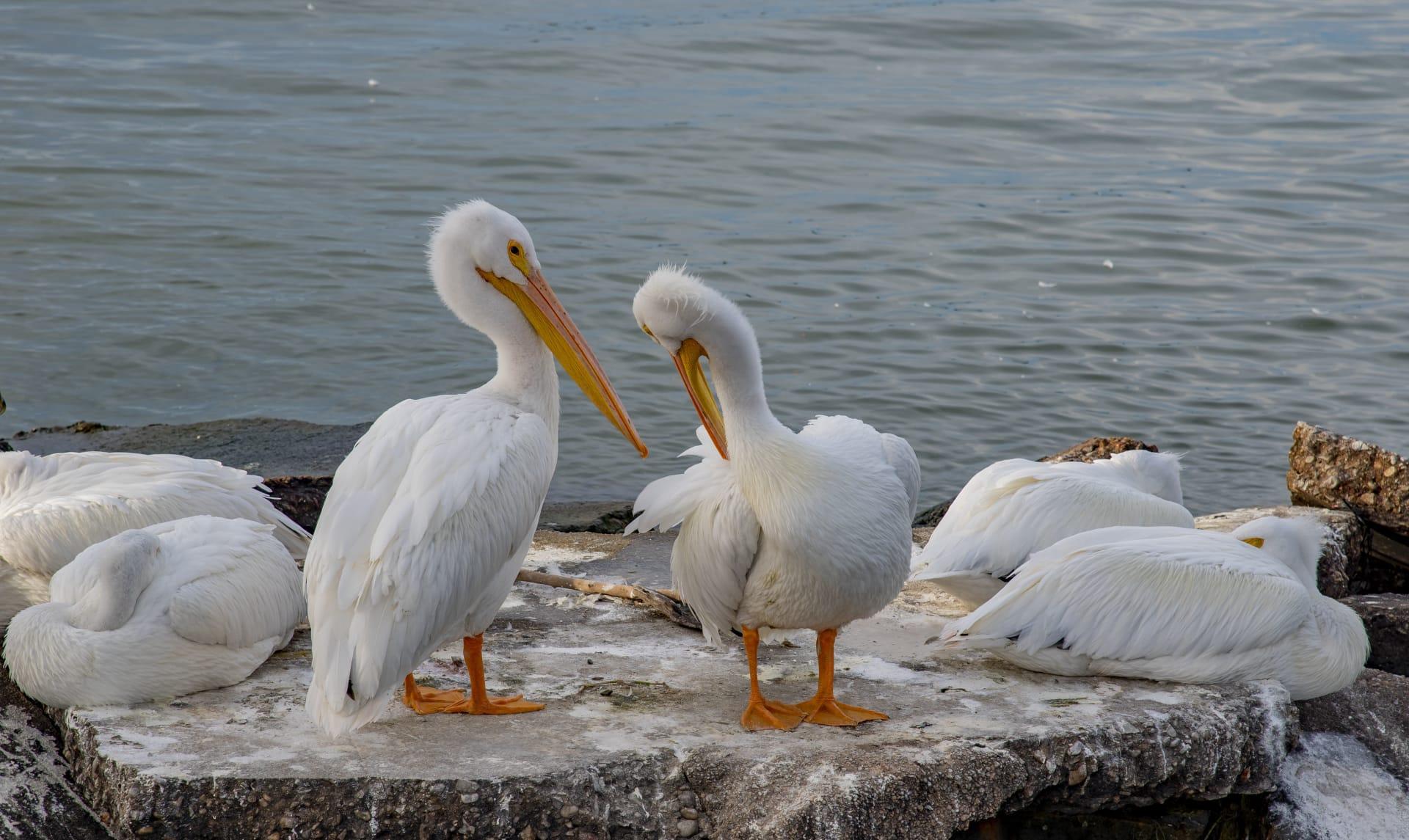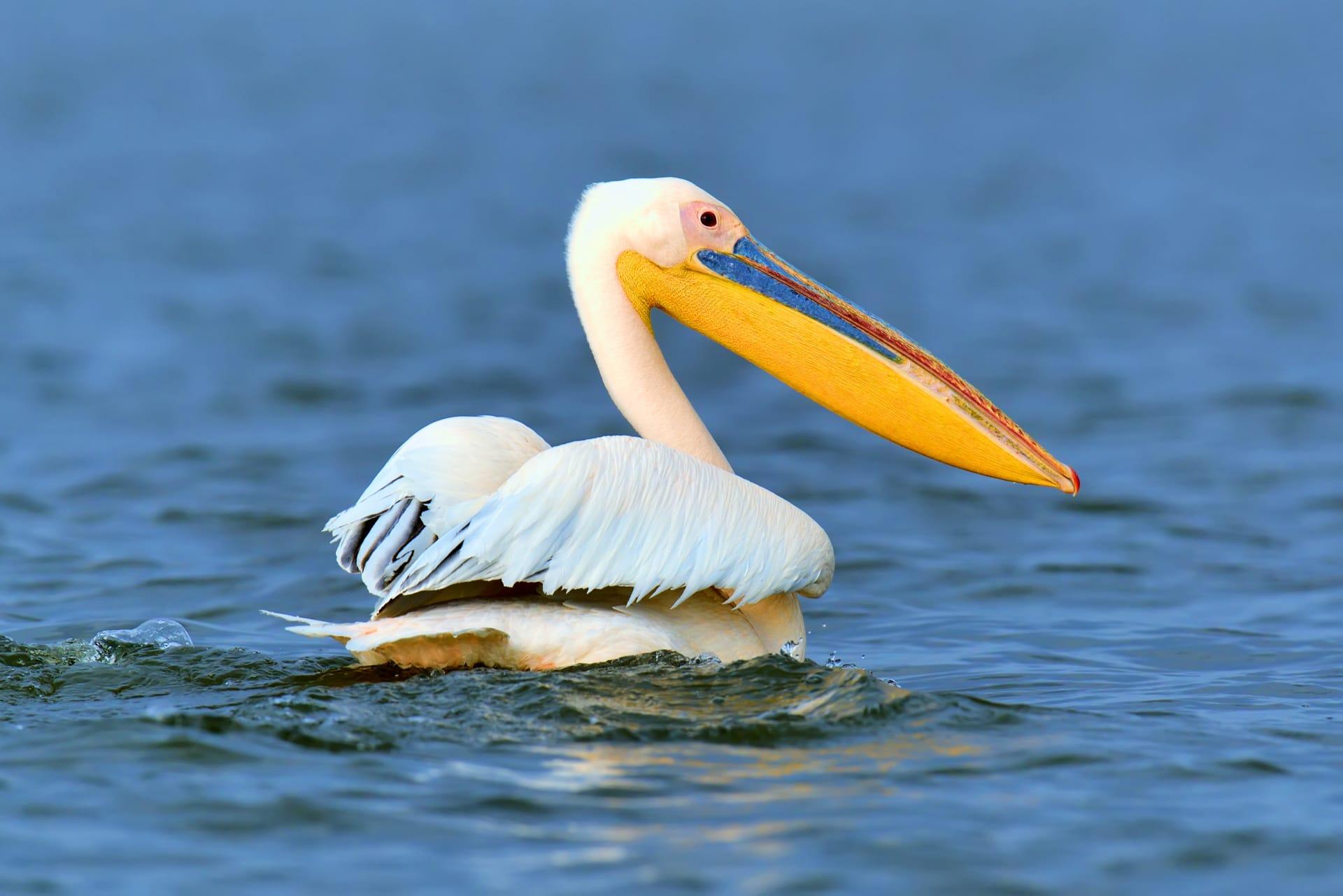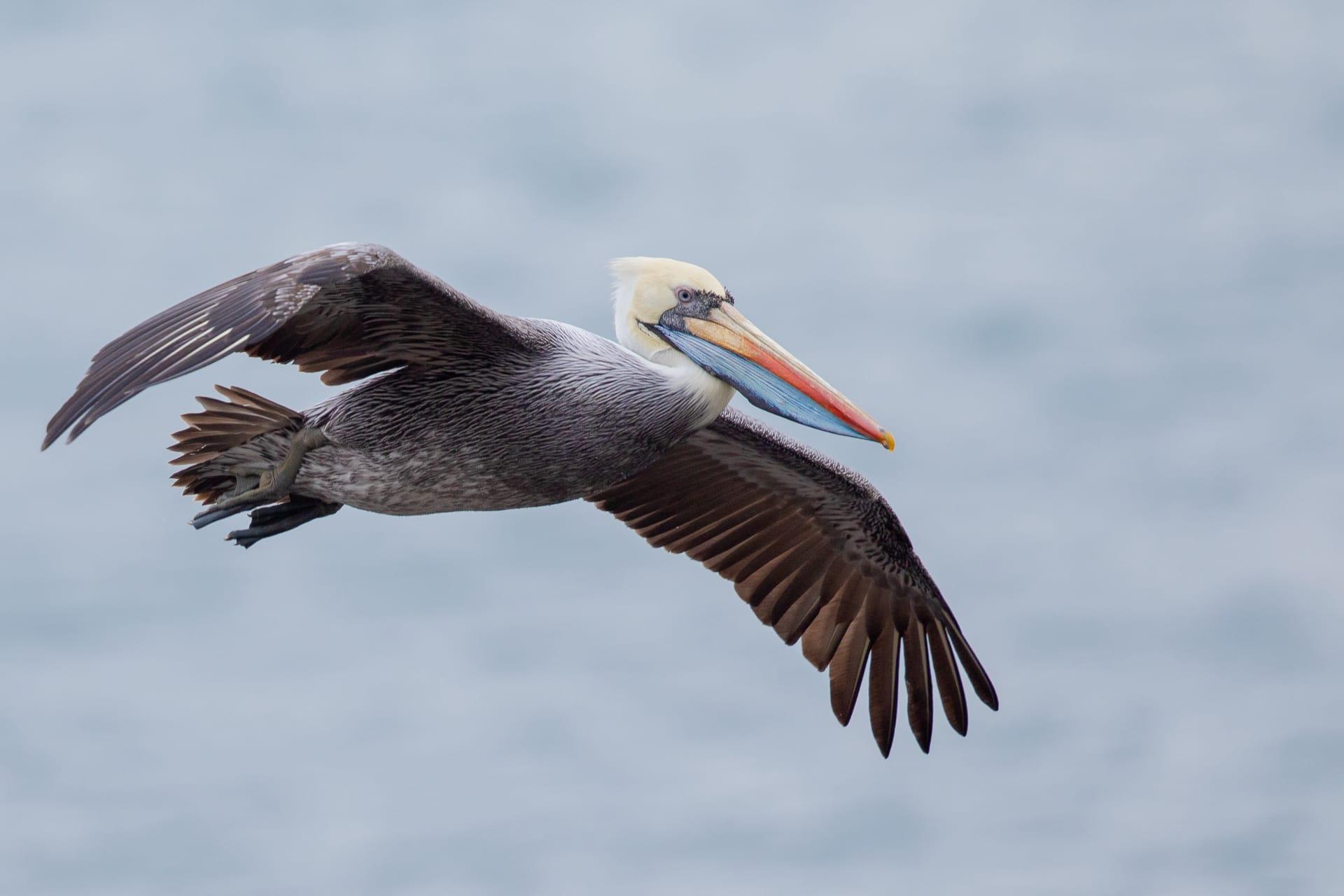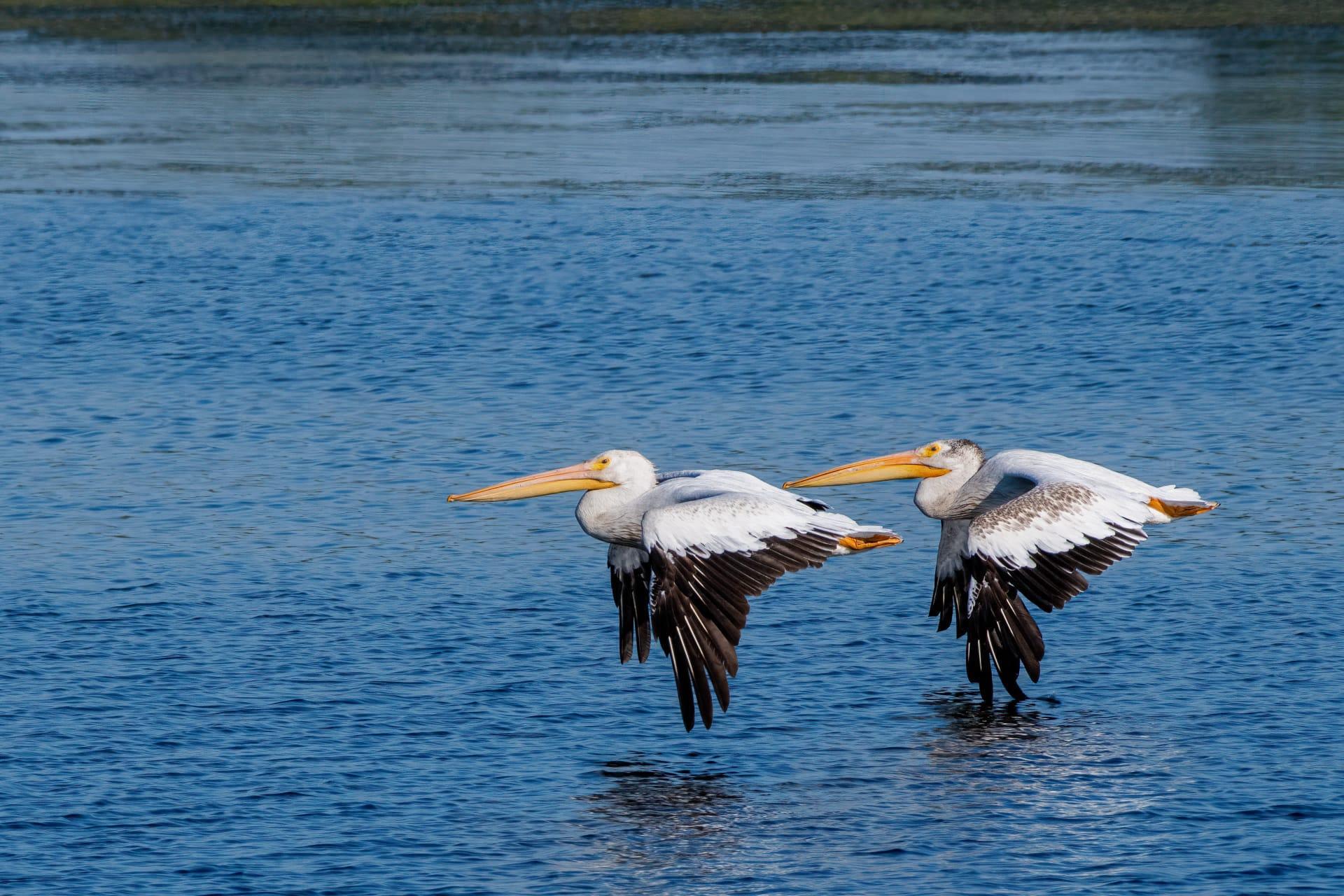Pelican Trivia
- Home /
- Trivia Question /
- Animal /
- Pelican Trivia
1
Question: How large can a pelican's beak get, and what's unique about it?
Answer: A pelican's beak is a marvel of nature, stretching up to 18 inches in length for some species. The beak's lower mandible has a flexible skin pouch, known as a gular pouch, which can expand significantly. Impressively, this pouch can hold up to 3 gallons of water - that's about as much as a toilet flush! When fishing, pelicans will scoop up water and fish, then tip their beaks down to drain the water before swallowing their catch.
Question: What's the wingspan of a pelican, and how does it aid in their flight?
Answer: Pelicans are known for their impressive wingspans, which can span from 7 to 11 feet, depending on the species. This wide wingspan aids in their remarkable flight abilities. They are master gliders, utilizing thermal updrafts to soar high with minimal effort. Their wings are specially adapted to reduce turbulence, allowing for graceful, energy-efficient flight over long distances, often traveling hundreds of miles in search of food.

2
Question: Do pelicans really store food in their beak pouches?
Answer: Contrary to popular belief, pelicans don't use their gular pouch to store food for later. Instead, the pouch acts more like a fishing net, scooping up fish and water. Once the water is drained, the pelican swallows its catch immediately. The pouch is elastic and can stretch considerably during feeding, but it's not designed to hold food for extended periods.
Question: Is it true that mother pelicans feed their young by vomiting into their mouths?
Answer: Yes, but it's not as gross as it sounds! Mother pelicans feed their chicks through a process called regurgitation. They catch fish, partially digest it, and then transfer this semi-digested, nutrient-rich food to their young. This method is vital for the chicks' survival, as they are not able to fish for themselves until they are older. This nutrient transfer is a common feeding technique among many bird species.

3
Question: How deep can pelicans dive, and how do they withstand the impact?
Answer: Brown pelicans, in particular, are known for their dramatic high-dive fishing technique. They can plunge from heights of up to 65 feet! Their bodies are specially adapted for these dives; air sacs under their skin and in their bones act as cushions, reducing impact with the water. Additionally, their eyes and nostrils are positioned to minimize resistance and prevent injury upon hitting the water.
Question: Can pelicans live in both saltwater and freshwater environments?
Answer: Absolutely! Pelicans are versatile birds, inhabiting both saltwater and freshwater environments. They're found along coastlines, lakes, rivers, and even some estuaries. This adaptability allows them to exploit a wide range of habitats for nesting and feeding. Their diet mainly consists of fish, which they catch with their unique beaks, making them well-suited to a variety of aquatic environments.

4
Question: What is the lifespan of a pelican, and how do they fare in the wild?
Answer: Pelicans can live quite a long time, with an average lifespan ranging from 15 to 30 years in the wild. Their survival depends on several factors, including food availability, habitat conditions, and threats from predators and human activities. In protected environments, such as nature reserves, pelicans can thrive and live towards the upper end of this range.
Question: Do pelicans migrate, and if so, how far do they travel?
Answer: Many pelican species are migratory, traveling considerable distances between their breeding and wintering grounds. For instance, the American White Pelican migrates up to 3,000 miles annually! They move in response to food availability and climatic conditions, often traveling in large, impressive flocks. Their migration patterns showcase their adaptability and resilience in the face of changing environmental conditions.

5
Question: How do pelicans communicate with each other?
Answer: Pelicans use a combination of vocalizations and body language to communicate. They are not particularly noisy birds, but they do make grunting, growling, and hissing sounds, especially in breeding colonies. During courtship and territorial displays, they use their beaks and wings in specific postures to convey messages. These visual signals are crucial for maintaining social order and attracting mates in their colonies.
Question: Are pelicans social creatures, and how do they interact in groups?
Answer: Pelicans are highly social birds, often seen in large flocks. They work together when fishing, coordinating their movements to herd fish into shallow waters for easier catching. In their breeding colonies, they display strong social bonds, engaging in communal nesting and even cooperative care of young. This social behavior is key to their survival, enhancing their ability to find food and protect themselves from predators.